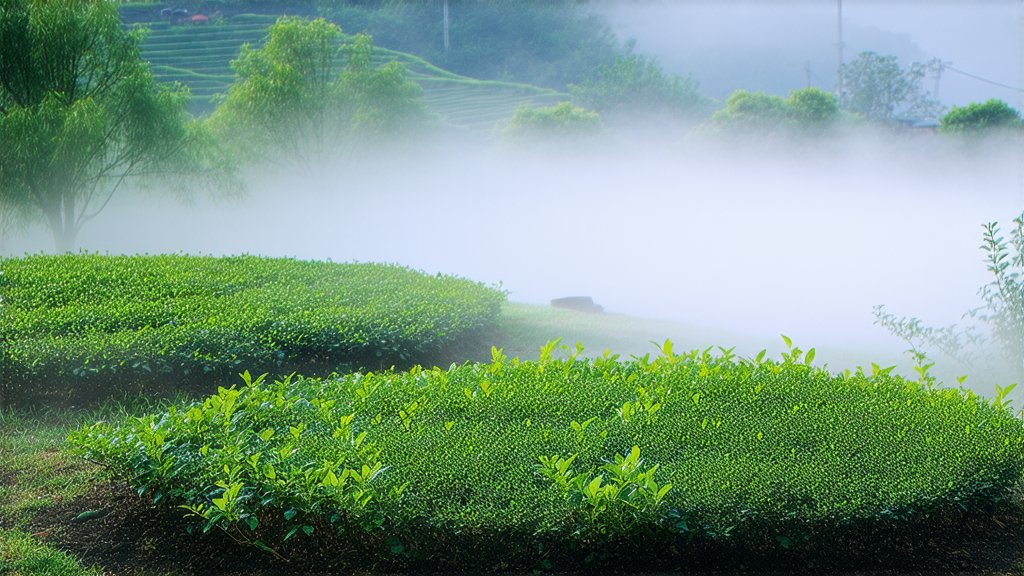
Longjing tea, also known as West Lake Dragon Well tea, is a quintessential representation of China's rich tea heritage. Originating from the picturesque villages surrounding West Lake in Hangzhou, Zhejiang province, this green tea has been enchanting tea enthusiasts for centuries with its unique flavor profile and captivating aroma. In this exploration, we delve into the history, varieties, meticulous crafting process, and the art of appreciating Longjing tea, offering an insightful journey into one of China's most cherished green teas.
Historical Background
The tale of Longjing tea traces back to the Tang Dynasty (618-907 AD), though it wasn't until the Qing Dynasty (1644-1912) that its reputation truly flourished. Legend has it that Emperor Kangxi, during his southern inspection tour, discovered this exceptional tea and was so impressed by its quality that he declared it the "Imperial Tea" and had it exclusively grown in the West Lake region. Since then, Longjing tea has been synonymous with imperial favor and has become a symbol of Chinese tea culture.
Varieties of Longjing Tea
Longjing tea primarily comes in two main grades: Xi Hu Long Jing (West Lake Dragon Well) and Qian Dao Mian (Front Dao Mian). The former, being the most prestigious, is grown in the core area around West Lake, while the latter refers to teas produced in nearby regions. Within these categories, further subdivisions exist based on the time of harvest, with Pre-Qingming (before April 5th) and Post-Qingming teas being highly sought after for their tender leaves and superior taste.
The Art of Crafting Longjing Tea
The magic of Longjing tea lies not only in its origin but also in the intricate craftsmanship involved in its production. The process begins with the careful selection of young tea shoots, typically consisting of one bud and two leaves. These are handpicked to ensure only the finest quality makes it to the final product.
Once harvested, the leaves undergo a series of meticulous steps:
-
Withering: Freshly picked leaves are spread out thinly to allow them to lose excess moisture naturally under controlled conditions, enhancing their fragrance and reducing bitterness.
-
Fixation: This crucial step involves pan-frying the leaves over high heat to halt oxidation immediately upon contact. The skilled artisan must constantly stir the leaves to ensure even heating, which transforms the leaves from bright green to a duller shade while preserving their natural flavors.
-
Rolling: After initial fixation, the leaves are shaped through rolling, which helps release more aroma and gives the tea its characteristic flat appearance reminiscent of dragon scales.
-
Secondary Fixation: The partially dried leaves undergo another round of pan-frying to further reduce moisture content and develop complex flavors.
-
Drying: Finally, the tea is dried at lower temperatures to achieve the desired level of dryness without compromising its delicate flavors.
Throughout this process, temperature control and timing are paramount, demanding years of experience and precision from the tea masters.
The Ritual of Tasting Longjing Tea
To truly appreciate Longjing tea, one must engage in the traditional Chinese tea ceremony, which emphasizes mindfulness, respect, and tranquility. Here’s a guide to savoring this exquisite brew:
-
Warm the Tea Ware: Begin by rinsing your teapot and cups with hot water to cleanse them and maintain the optimal temperature for brewing.
-
Measure the Leaves: Use approximately 3 grams of loose leaf Longjing tea per 150ml of water. Adjust according to personal preference for stronger or milder flavors.
-
Boil the Water: Heat water to around 80°C (176°F). Overheating can scald the delicate leaves, resulting in a bitter taste.
-
Steeping: Place the tea leaves into the warmed pot and pour in the hot water gently. Allow the leaves to infuse for about 1-2 minutes for the first brew. Subsequent infusions can be steeped slightly longer.
-
Observe: As the leaves unfurl gracefully, take note of their vibrant color and subtle movements within the water.
-
Aroma: Before sipping, inhale deeply to capture the pure, chestnut-like fragrance that defines high-quality Longjing tea.
-
Sip & Savor: Take small sips, allowing the tea to coat your palate fully. Notice the initial sweetness followed by a lingering umami finish, indicative of a well-crafted Longjing.
-
Multiple Infusions: Longjing tea is renowned for its ability to withstand multiple infusions, each revealing new layers of flavor and complexity.
In conclusion, Longjing tea stands as a testament to China's profound tea-making legacy, embodying both artistry and tradition. Its journey from tender leaf to aromatic cup encapsulates the harmony between man and nature, inviting tea lovers worldwide to partake in this timeless ritual and experience a piece of Chinese cultural heritage with every sip.